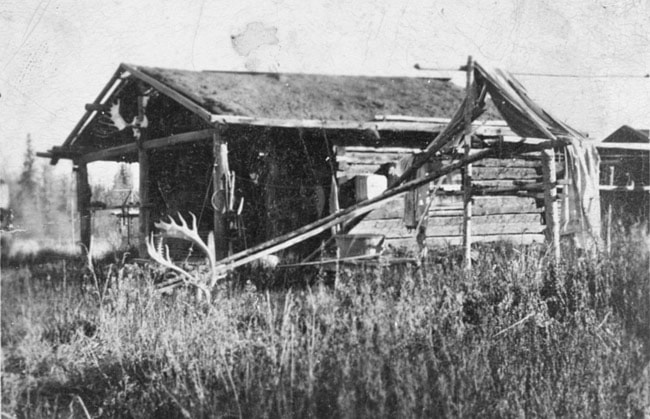A big-game hunter named James Bond visited the once-bustling site of Lansing Post in September 1947 and commented on the poor state of its structures.
“The buildings had fallen apart and most of them had rotted into piles of debris,” he said, according to a historical document Jody Cox put together for the Yukon’s Department of Tourism in 1999.
“Where people once walked and carried on a happy community life, grass grew four feet tall. The finest vegetation I have seen anywhere in the Yukon grows at Lansing.”
Bond visited the area at the confluence of the Stewart and Lansing rivers about 40 years after it had established itself as one of the territory’s most important trading posts.
At its peak there were over a dozen buildings at the site, which is within the traditional territory of the First Nation of Nacho Nyak Dun. Today, only three remain and Lansing Post is still only accessible by water or air.
The First Nation is working with the Yukon government to develop a management plan for the area, located 120 kilometres east of Mayo, and designate the site a heritage resource.
Heritage Manager Joella Hogan said it’s something the First Nation has been working towards for the past 20 years.
“It’s one of those things that got set aside until we were ready,” she said.
“We have a lot of relations that come from Fort Good Hope and Fort MacPherson. Lansing Post was key in all that travel.
“But we’re also focusing on so much more, like the trails around the area, the travel routes and genealogy.”
The First Nation just put out a request for proposal to hire a contractor to facilitate the management planning process, Hogan said.
A public consultation, scheduled to take place at the beginning of June, will determine what the community wants out of the plan, she added.
According to Cox’s research, two men - Percival Nash and Frank Baine - established the trading post in the early 1900s.
Trapping conditions in the upper Stewart River area were very good in the early 1900s, Cox writes, but the extent to which non-native trappers operated in the area is less clear.
Although Nash and Baine never purchased land for the post, nor do government records show they obtained a trading permit for the business, they operated there until at least 1908.
That year they sold it to Jim and Helen Ferrell. The couple only stayed for a few years, however.
An RCMP constable who visited the site in 1911 reported that a trader on the Pelly River had been spreading stories about all white men on the Stewart River being thieves, thus discouraging native people from trading with the Ferrells.
The trading post was turned over to Jim Mervyn, who had a good relationship with the Mackenzie River people - in part because his wife, Julia, was originally from the area.
He used trading tokens rather than currency - worth $1, $10 and $20 - made of aluminum and brass.
Cox concluded that a number of factors led to Mervyn closing the post at Lansing. In 1918 the First Nation community was decimated by sickness, leaving only a few survivors.
Then, in 1938, a massive flood destroyed the banks on which the post stood.
Mervyn began expanding his business to Mayo, buying the Binet Bros. firm, which included the general store.
“The transition from being a centre for trade and social activities in the early 1900s to a ghost-town by the 1940s occurred over many years,” Cox writes.
“As one First Nations woman commented, people began ‘to drift away’ and moved to Mayo or to their camps.”
Hogan said the management plan could feature some restoration of the remaining buildings.
“It depends on what the community wants, and how it wants to use that site,” she said.
Hogan said updates will be posted to yukonheritage.com.
Contact Myles Dolphin at
myles@yukon-news.com
